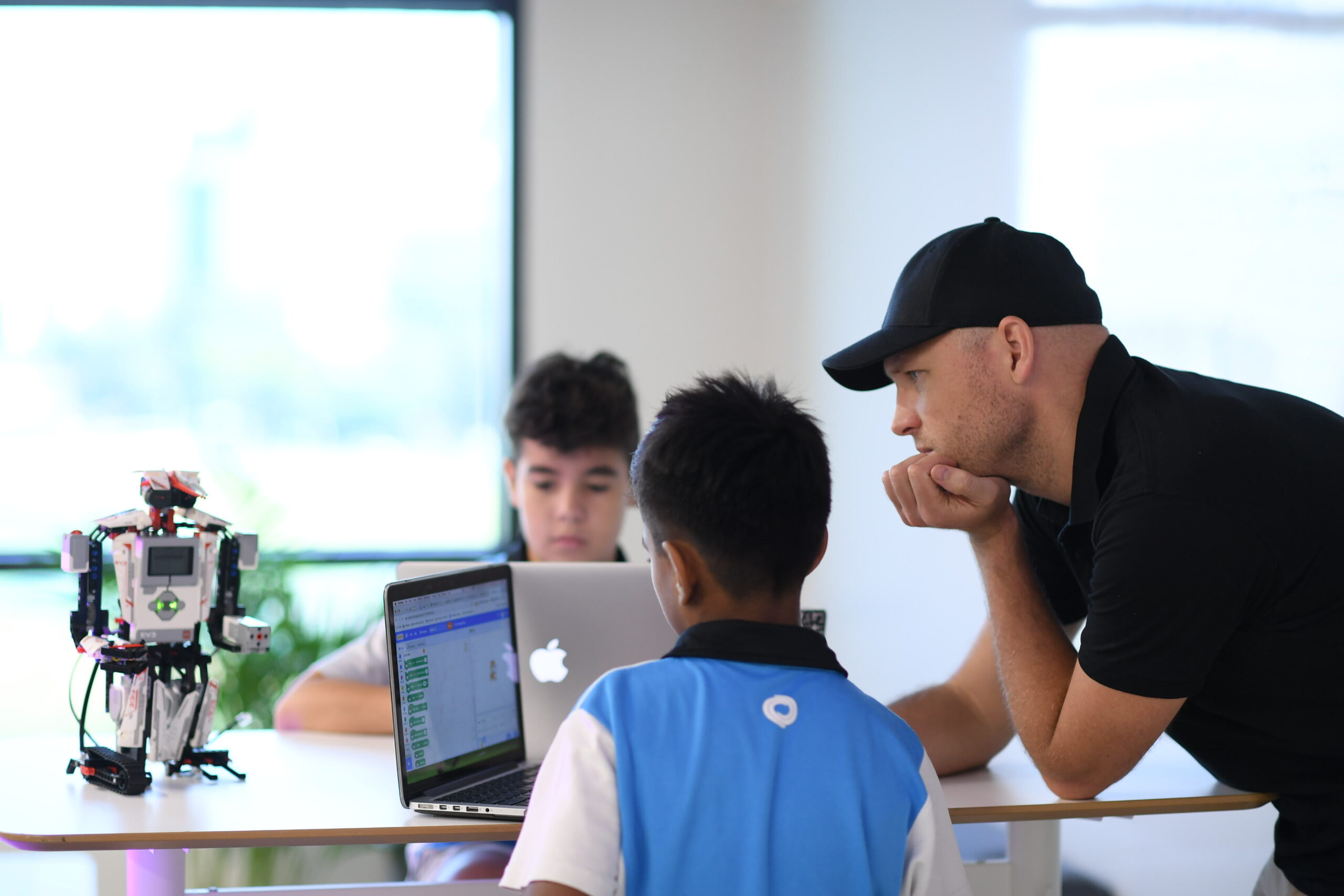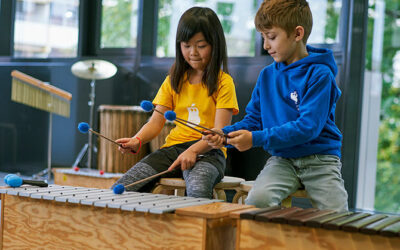Choosing a School in Singapore
Safe streets, green spaces, and a rigorous education system: Singapore has always been a magnet for international families. Now it has overtaken Hong Kong to become Asia’s top financial centre (and the third largest in the world below New York and London), according to new figures from the Global Financial Centers Index. Sally Robinson reports.
In the last three years Singapore has seen an influx of ex-Hong Kongers driven out by the city’s extreme Covid measures and stifling new national security laws. Scores of businesses have relocated, bringing their staff with them.
“Singapore managed the pandemic well,” says Lee Quane, a director at global relocation consultancy ECA International. “It was good at rolling out the vaccine, had a clear plan and opened ahead of other cities in Asia.”
The downside has been a marked increase in the cost of living: rent and school fees have both risen over the past 12 months. There is also increased demand for school places. Although Western expats are still coming into Singapore, ISC Research, which provides data and intelligence on the international schools’ market, identifies most growth as coming from Asia, specifically China, Hong Kong, South Korea, India and Japan. Singaporean children are not permitted to attend international schools.
“Singapore has definitely benefited from Hong Kong’s demise,” says Ashwin Assomull, a partner at L.E.K consulting. “But the growth in education is not as strong as everyone envisaged. Enrolments are growing, but only by one of two per cent.”
NEW SINGAPORE SCHOOL OPENINGS
The last few years have been tough, but Singapore is still one of the world’s most dynamic and competitive markets for K-12 international education. With over 60 international schools, it offers a diversity of curriculums and fee points. At 16+, IB is the most popular qualification but there are many good options for A levels too.

Above: Students from Nexus International
Despite the pandemic there has been considerable growth in Singapore’s international school market. An influx of new schools, including three offshoots of premium British independents, all opened their doors in 2020.
Brighton College, a branch of the British public school known for its strong academics, welcomed pupils to its second partner school (the first is in Abu Dhabi) in August 2020. It offers a premium primary education (fees are SGD34,000) from nursery through to year 6.
A second UK import, the Cambridge-based Perse School, also established a primary school in 2020, following the UK’s Cambridge Primary Curriculum. Its facilities are less sophisticated than at some schools, reflected in the more affordable fees (SGC25,000).
The last of the 2020 openings was North London Collegiate (NLCS) which already has schools in Jeju, Dubai and Bangkok. Located on a swish purpose-built campus, the through-train school teaches an IB curriculum and describes itself as being for “scholars and critical thinkers”. Fees are among the most expensive in Singapore (up to SGD47,000).
“North London Collegiate has been a real success story,” says L.E.K’s Assomull. “It focuses on academic rigour which resonates with both Western ex pats and the Chinese.”
It’s a territory Dulwich College knows well. It was the first UK independent to open in Singapore in 2014 and quickly developed a reputation for strong academics. Located on a purpose-built campus in Bukit Batok, the high-end facilities command some of the most expensive fees in Singapore. Part of a network of 10 international schools in Asia, it offers a premium through-train education for 2000 students who take IGCSE and IB exams. The school is also well respected for its dual language early years programme which delivers lessons in English and Mandarin.
THE IMPORTANCE OF BRAND
In the next few years yet another UK import, Wellington College, is set to join the fray, developed in partnership with Singaporean billionaire Peter Lim. It joins Wellington offshoots in Thailand and China, and will cater for 2000 students following the English curriculum and offering IB. As the new openings in Singapore attest, branded school groups are a growth area. ISC Research shows a global increase in their market share from 23 to 38 per cent in the past five years.
Branded schools are still something everyone want to get involved in. Demand for international K-12 education is growing and the parent schools need the income.”
Ashwin Assomull, L.E.K Consulting
Many are expensive but there is still strong demand – the enrolment rate at premium-fee schools has grown by 18 per cent in the last five years.“
Branded schools are still something everyone wants to get involved in,” says L.E.K’s Ashwin Assomull. “Demand for international K-12 education is growing and the parent schools need the income. The brand name gives the investor a head start: parents might not have heard of the school, but investors can refer to its academic track record. It’s a symbiotic relationship.”
New arrivals to Singapore often target the best-known long-established schools. These include the Singapore American School (SAS), Tanglin Trust, United World College of South East Asia (UWCSEA) and Dulwich College. United World College is the most international of the group, with two campuses, educating over 5000 students.
British families often head straight for Tanglin (over 50 per cent of pupils are British passport holders), famous for its lengthy waiting lists. Founded in 1925, it is the only international school in Singapore to offer both IB and A levels in the sixth form. It educates 2800 pupils from aged 3 to 18 and is one of the top performing international schools in Singapore for IB. “Our exam results last year were the highest they have ever been,” says Tom Evans, director of marketing and communications.
THE FUTURE: EXPECT MORE BILINGUAL AND AFFORDABLE SCHOOL OPTIONS
School reputation is very important in Singapore, says Janelle Torres, ISC’s research manager for SE Asia.
“It is the reason why legacy school such as Dulwich, Tanglin Trust and UWCSEA are so popular.”

Students from Tanglin Trust
Not all new openings are British spin-offs. Nexus International, owned by Malyasia-based Taylor’s Schools, opened in 2011 and moved to an impressive new purpose-built vertical campus in in Aljunied in 2020 which can accommodate 2000 pupils. Nexus offers a hybrid curriculum from early years to IGCSE and then IB diploma. The emphasis is on a flexible learning environment with open plan classrooms. The school has a strong reputation for sport, particularly swimming, thanks to its upscale aquatics centre with Olympic-size pool.
The Invictus International School, one of Singapore’s most affordable international schools (fees around SGD20,000), recently upgraded its facilities opening a new campus in 2021. The school started out as a small primary but the new location offers a K-12 education leading to IGCSE and A levels. Invictus also has an affordable bi-lingual primary school programme.
“We are seeing a greater inclination to learn Mandarin,” says L.E.K’s Assomull. “The schools with bilingual programmes are doing particularly well including the Canadian International School and Dulwich.”
One of the biggest growth areas in Singapore is in more affordable schools where fees hover around SGP$20,000 (compared with SGP$40,000 plus at the premium end of the market) and are popular with Chinese families.
“Mid-priced schools are a growth area in Singapore,” says L.E.K’s Assomull. “The government is encouraging this sector because it feels the market is dominated by the premium brands, which not everyone can afford. These less expensive schools get some amazing academic results.”
More affordable options include 5 Steps Academy, DPS International School, Invictus, the Grange, GIG International and Middleton International School. The latter delivers a bilingual education and is owned by education group Eton House, which has 130 schools spread across 11 countries. It has three campuses in Singapore including the West Coast campus which opened in 2022 offering nursery to grade five and the main Tampines campus up to year 12.
One World International in Jurong also offers more affordable fees and operates a 30 per cent nationality cap ensuring a truly diverse student body. It also has Chinese bilingual programme from grades 1 to 5 and a curriculum that blends the IB primary years with IGCSE and the IB diploma.
“It’s definitely possible to find a well-rounded international education at pocket friendly prices in Singapore,” says Anne Murphy, an education consultant at ITS Education Asia.
Mid-priced schools are a growth area in Singapore. The government is encouraging this sector because it feels the market is dominated by the premium brands, which not everyone can afford. These less expensive schools get some amazing academic results”
Ashwin Assomull, L.E.K Consulting
The move to more affordable schools reflects a global trend, according to ISC Research, which cites a 19 per cent increase in students enrolled in mid-market fee international schools between 2017 and 2022. Several factors have contributed to the growth including the reduction in expat benefits, which often included school fees, and more demand from host nation families. “The international schools’ market is broadening to meet the needs of a wider range of students,” says a recent ISC Research white paper.
Save the date
The Innovation Festival for Global Working
Join us on 8 June 2023 in Kent, UK



